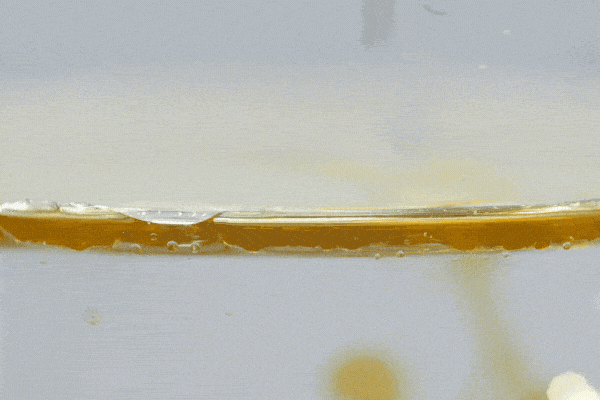4 Cool Engineering Projects To Try At Home (For Grown-Ups)
Have you been looking to build something interesting in your spare time?
If your answer is yes, then look no further. In case you’re worried about having a science background, your passion for engineering is all the gas you need to jerry-rig your way through these totally awesome beginner engineering projects.
There are so many engineering projects for adults out there, but being able to select the right fit for you with regards to your level of experience and availability of materials is quite a challenge.
Don’t be shaken up. The satisfaction of finishing a project will definitely warm your heart.
And don’t worry – just because you left the classroom (beep) years ago, it doesn’t mean it’s too late to learn and build!
Having said that, let’s start building.
Cool Engineering Projects for Adults
#1. DIY Homemade Phone Projector

Movie nights are the best, right?
If having a theater at your home has been a dream, brace yourself. How cool will it be to make your own projector? A cherry on top, you don’t have to worry about the materials at all since this is a beginner friendly project.
Materials required
- 2 magnifying hand lenses
- Gluesticks
- Shoebox
- Smartphone
- Foam board
- Hot Glue Gun or superglue
- Cutter knife
- Hacksaw
- Ruler
What to do
You are going to handle the projector box and the phone holder separately.
- You’ll only need the magnifying glass itself. The handle would get in the way! So hack it off.
- You can use a marker pen to paint the inner part completely dark when the box is closed.
- Identify the front part of the box and firmly secure your lens to the middle part after making a hole.
- Using the foam board, make another hole for the second lens and place it a few inches from the front part.
- Don’t seal the box shut as you’ll need to place the phone holder with your phone inside.
- Using the double sided tape, stick your phone to the foam board.
- Cut the foam board in shape to ensure that the holder fits inside the box.
- Max out the phone’s brightness, then play your favorite video.
- Place the holder inside the box and switch off the light.
What you expect to see
The video plays on a white wall. You can add to the experience by using bluetooth speakers for louder sound.
As projectors also need to be focused for clarity, move the phone stand in the shoebox to ensure it is clear.
What happens
Light comes from the screen of the phone which eventually forms the image on the wall. The box is painted black on the inside to make sure there is no internal reflection of light which can distort the image quality.
Light is inverted by the first lens then inverted back by the second one, which magnifies the image creating a large screen.
‘Lighten’ the mood when you hang out with your friends next time with your new invention!
#2. Hydroelectric Power

Ever thought about how hydroelectric electricity is generated?
Turn your passion into power with this awesome experiment as you see how energy transformation plays a key role in power generation.
DC Motors
A DC motor works on the principle that energy can be transformed from one form to another. It can work as a generator, converting mechanical energy to electrical energy.
Materials required
- 6 plastic spoons.
- A dc motor (from old electronics or cheaply from Amazon)
- A circular cut out plastic plate (3 inches in diameter)
- Hot glue gun or superglue
- Protractor ruler
- An LED
What to do
- Using the protractor, make lines through the diameter 30 degrees apart from the center of the plastic plate.
- Using the hot glue gun, place the spoons on the circular plate with the bowls facing one direction.
- Mount the turbine fins you just made to the axle of the motor.
- Then use the popsicle sticks to make a mounting base.
- Connect the LED to the motor terminals.
- Place the motor in a running water source.
If you found this project easy enough, you can take it one step further and make a bigger generator!
The outcome
Expect to see the LED light. The LED might flicker but this is because the water force is probably not strong enough.
Let’s get into the physics behind what is really happening.
The law of electromagnetic induction says that when a conductor cuts through magnetic flux, a current is induced.
This phenomenon, known as the motor effect, is the reason behind the current that powers the LED.
#3. Water Level Alarm
How cool is it to be able to check your tank water level to prevent overflows? Maybe you had a hydroponic garden. This could bring your hydroponics project to a new level. The alarm serves to give an early alert that water has reached a certain level.
You can also adapt this for a rain water harvesting plant in your backyard to indicate water level on the collection tank.
But, how does it work?
While enforcing the general idea of an electric circuit, this fun engineering project for adults should get you started on your journey to design and create a water level detector and alarm system using basic components.

Theory
An open circuit does not conduct electricity. But when the circuit is closed, current is conducted.
Simple, right?
The movement of electrons through a wire or a solution constitutes an electric current. In simple circuits, electrons flow from one positively charged terminal of the power source to the next through external components.
Now let’s get started.
What you’ll need
- Buzzer (available cheaply)
- Connecting wires
- Battery
- Battery holder
- Cylindrical container or a glass or water
- Cardboard base
What to do
- Connect the buzzer’s positive terminal to the positive terminal of the battery.
- Connect a wire to the negative terminal of the battery and tape the other end to the bottom of the glass.
- Connect a wire to the negative terminal of the buzzer and tape the remaining end to the desired level, preferably close to the brim.
Results
When you add water to the empty glass, the water level begins to rise. It eventually makes contact with the upper terminal, completing the connection. The buzzer therefore beeps.
The alarm can be used to alert someone of water levels on the farm, especially where irrigation is involved.
#4. DIY Air Conditioner

Sometimes the heat waves are quite unbearable in the summer.
Maybe you’ve thought of making something that can cool you down when working in the garage. Try out this interesting project as you venture into world of physics dealing with pressure and air flow.
What you’ll need
- A storage container
- A DC motor
- Soldering iron
- Battery
- A bottle
- A switch
- A mini fan blade
- Ice cubes/dry ice
- Hot glue gun or superglue
Procedure
- Take the container cover and make a slot for the DC motor.
- Using the dc motor, trace the region to be cut for the DC motor.
- After making the slot, make holes on the container cap using the soldering iron.
- Using the hot glue gun, glue the DC motor on to the container cap.
- Cut the cylindrical portion of the bottle and draw an outline on the side of the storage container.
- Cut out the marked circular outline from the container.
- Glue the cut out section of the bottle onto the storage container making a vent-like opening.
- Since the DC motor is on the inside of the container cap, connect the mini blade fan to the motor.
- Connect the battery and switch to the DC motor.
- Add ice cubes or dry ice to the container for cooler effects.
Expected Outcome
On switching on the switch, the dc motor is expected to start running and start the cooling action. The bottle section is where the cool air is supposed to blow from.
This is the working concept of the air conditioner: the mini blade fan blows air. The air which enters through the perforated sections of the container cap because of Bernoulli’s effect.
The ice provides additional cooling.
I would recommend dry ice since it is a little messier and poses less chance for short-circuits.
Frequently Asked Questions
What is the most fun field of engineering?
Choices are highly individual, but for most people, the most fun field of engineering is Robotics. This is a field that deals with the automation of processes using electronics. Without a doubt, automation makes life easier and more fun.
What do engineers do when bored?
When engineers are bored they build stuff. Yes, you should opt for building stuff when bored. Even though engineering is popularly seen as a super complicated field, there are simple projects and quite enjoyable ones that anyone can make.
How does the generator work?
Generators work under the principle of electromagnetic induction. This applies in that conducting wires are wound to an iron core which gets magnetized and demagnetized spontaneously.
The conductor coil is rotated rapidly, the magnetic field from the magnet is cut by the conductors leading to a flow of electric current.







